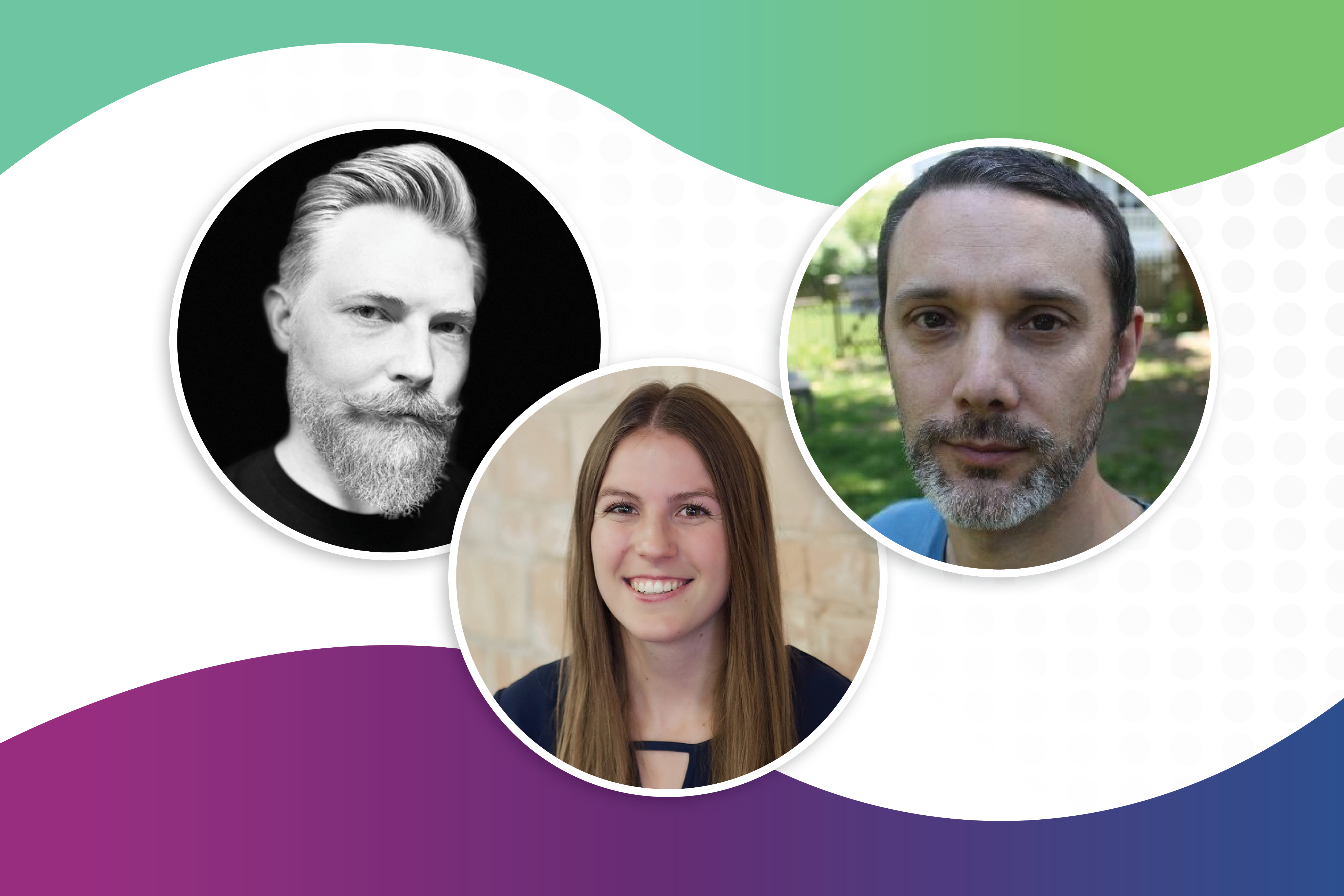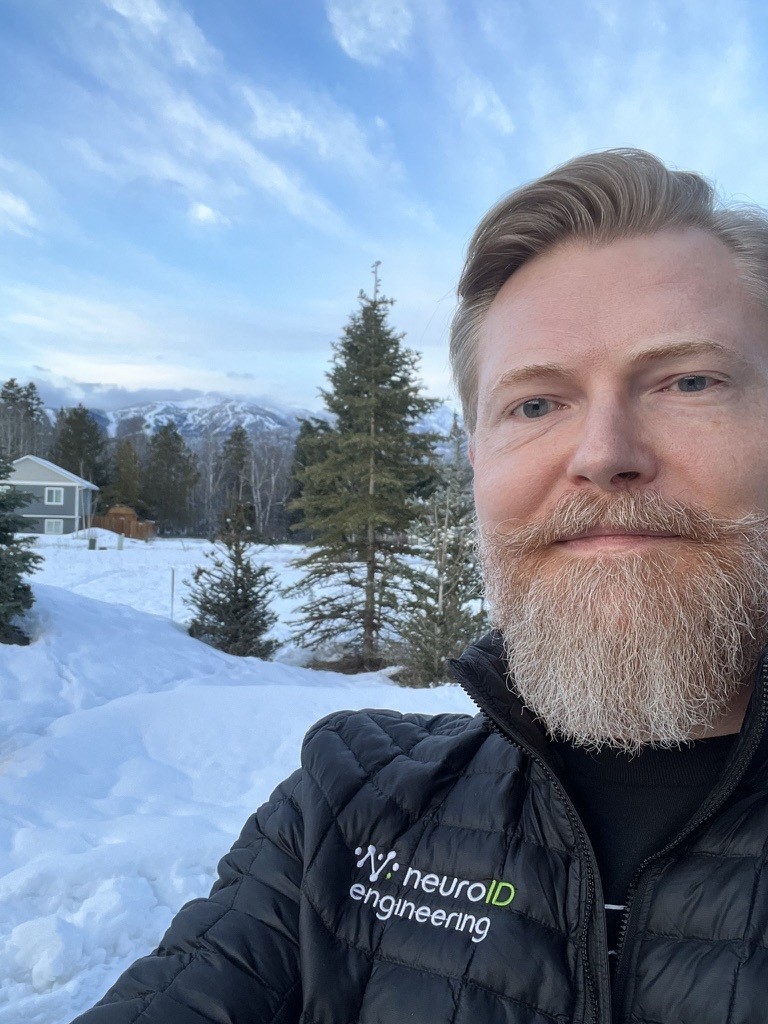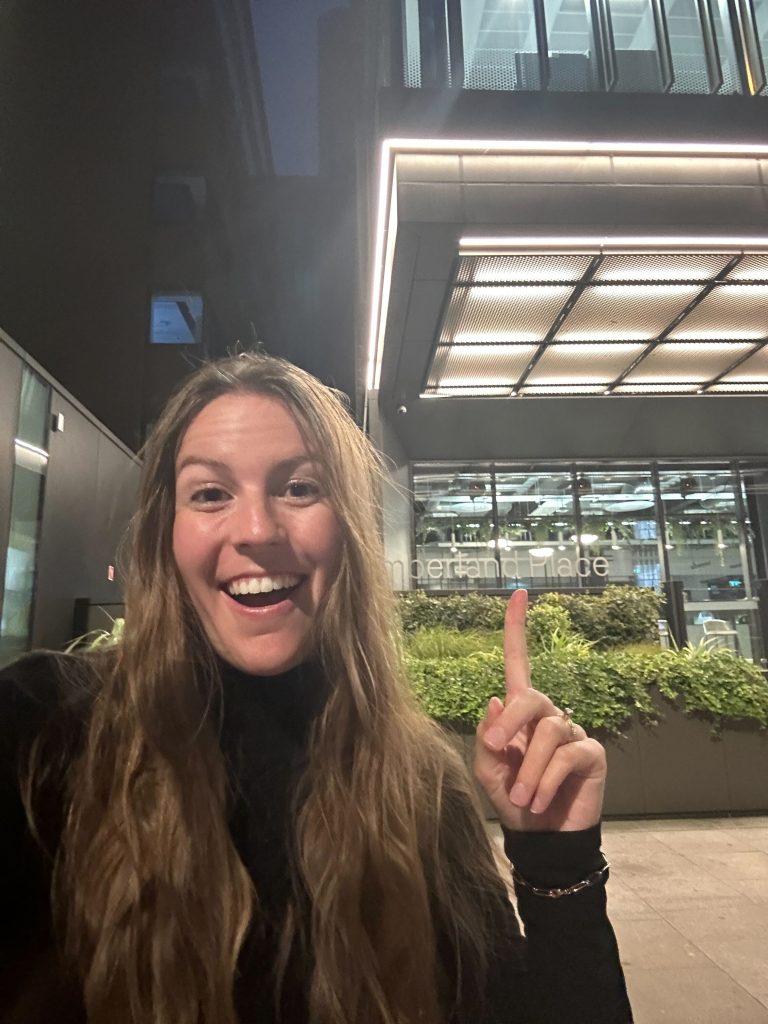
From Plane Briskets to Data Architecture: 5 Questions for 3 NeuroID Engineers
Founded by PhDs in Montana, NeuroID has long blazed new trails along its start-up path. And last week, we forged another new frontier: NeuroID officially became a part of Experian!
With this tremendous milestone, we want to celebrate a few of the great minds behind the innovations that got us this far! We sat down with three of our engineers who work tirelessly to ensure that NeuroID products are groundbreaking, scalable, and customer-centric.
The Big Brains Behind NeuroID’s Trailblazing Tech
David Broeckelman-Post, known to us affectionately as DBP, has worked in identity and trust management solutions his entire career. As NeuroID’s SVP of Engineering, DBP has brought impeccable leadership and the in-the-mines start-up experience needed to turn our Engineering department into a flexible and fast-moving team, ready for all the challenges of continuously evolving NeuroID technology to meet changing market dynamics.

DBP in Whitefish, Montana (up a mountain from NeuroID HQ)
Haley Roberts joined the NeuroID team as a software engineering intern while earning her Master’s degree from BYU, and has since become one of our longest-tenured employees, advancing to her current role as a Senior Software Engineer. Haley is also our informal Chief Meme Officer—be sure to read to the end for a special bonus compilation of some of her highly-celebrated Sprint reviews!

Haley, outside the Experian’s Dublin HQ
With an Engineering Master’s from Oxford and Computer Science PhD from MIT, Matt Williamson has long stood on the cutting-edge of data science for some of the world’s top robotics and technology companies. As our Chief Data Science Officer, his insights are one of our biggest superpowers.

Matt, Haley, and DBP—along with so many others—have been instrumental in NeuroID’s solution development, company growth, and cultural evolution. Here’s what the NeuroID journey has looked like from their seats at the keyboards.
Q1. Why did you first join NeuroID?
DBP: Throughout my career I’ve seen many technologies for detecting fraud. NeuroID’s analyzing human behavior approach was compelling—especially how it could be done without any PII [personally identifiable information]! I also liked how the approach was extensible across multiple use cases.
What really clinched the deal for me were my conversations with Jack [NeuroID CEO] and Jeff Jenkins [NeuroID co-founder]. It was clear to me that they were passionate about NeuroID’s mission and committed to building a team that could succeed. Their passion, transparency, humility, openness, and drive to get things done really impressed me.
Haley: I first heard about the technology while I was a research assistant for Professor Jenkins, one of our founders, during my Master’s degree. The NeuroID javascript was developed during his PhD and he continued to use it for research purposes at BYU.
I had never seen anything like it before. We did some pretty cool things with the javascript in a research setting. My big research project with him was using our javascript to predict a person’s level of compassion. So, when I got the job offer, I was already sold on the technology. But what really sealed the deal for me was when Jeff invited me to a NeuroID staff meeting inside one of the conference meetings on campus. I walked in not really knowing what to expect, having not met everyone yet, only to find myself at a BBQ inside the conference room. Our Montana folks had snuck a brisket onto the airplane to Utah specifically for this meeting. Everyone was so kind and fun, it was really different from any other corporate environment I had been in. The great tech and great people really was the glue for me, and for many others. Every time I explained the high-level concept of NeuroID to a family member or friend, even if they were non-technical, they “got it” right away. Something that is so intuitive yet genius is what makes NeuroID so great.
Matt: I love working with data, and NeuroID sounded like it had really interesting data. Looking at how people type to figure out if they are committing fraud—that was wild. Wild that it is even possible. So, I was sold immediately!
Q2. What milestones along NeuroID’s evolution have meant the most to you?
Matt: I think the biggest milestone was delivering the first new onboarding solutions to customers.
When I started at NeuroID, the company was using an older version of the technology that really did not make the most of the data. I spearheaded research and implementation to create a new version that performs better and has allowed us to address new challenges along the way, for example detecting bot scripts, and more recently our account defense product.
It was exciting to go so quickly from an idea to a prototype to an implementation at scale to value for customers.
DBP: One big milestone was when we transitioned from a batch processing system to a real-time streaming architecture, recognizing that real-time decisioning was crucial for our customers to effectively combat fraud. This shift required a complete re-architecture and a significant cultural evolution. We embraced even more modern practices, including frequent, small deployments and automated testing, to create a fast-moving, resilient development environment. As a result, our deployment frequency increased by over 30 times, allowing us to quickly adapt to market changes and customer needs.
In order to evolve our technology, we needed to evolve our culture too, which would influence how we built software. We needed an environment that let us ship high-quality code quickly and safely, and where developers could move fast and thrive. We discarded many standard practices, like long development cycles with large change sets, monthly releases, and 2 a.m. maintenance windows.
When you’re a startup you have to move fast. Market dynamics change, customers surprise you with new use cases, competitors are constantly introducing competitive capabilities. I remember Jack calling me the week before our Thanksgiving holiday. He had just finished a strategy session and our entire product focus needed to pivot to ship a new product by January.
Many organizations would have said, “That’s impossible.” We said, “Bring it on!” That’s one thing we’ve experienced over and over at NeuroID: In the fast-paced startup environment, adaptability is key. At NeuroID, we built a team and system that could pivot quickly and confidently, delivering new capabilities rapidly.
Haley: Finishing the real-time architecture, in essence a brand new pipeline for our data processing, moving away from our legacy pipeline, was a huge deal in my book. That took a ton of really hard work from a pretty small team. The NeuroID product was greatly improved from this work, and it was incredibly fulfilling to build something so powerful. The changes that were needed in order to make this happen were what set the baseline for our engineering team to be so effective. These things include faster deployments, better reviews by establishing a culture of trust, and a more clear vision of the future. This experience of building this major initiative is what set the tone for our work in the future, and helped us become extremely effective.
The 2022 DC Engineering Offsite was also a highlight for me, we had so much fun all together. Running around the city, staying up too late, and making a thousand inside jokes was an incredible experience. I already knew I worked with amazing people, but something about that offsite in particular has always stood out to me as the time I really knew that the culture at NeuroID was special.
Q3. Tell me about when you first knew that Experian wanted to acquire us. What was your reaction?
Matt: My first thought was “the beautiful data!” NeuroID has a big corpus of behavioral data, but we purposely do not collect any of the PII that Experian has. We focus on the “how” data is entered, not the “what” was entered. But a complete fraud detection system would have both. I’m really excited to explore how combining signals can make all the products work better and open up new use cases.
DBP: I was very excited to hear that Experian wanted to make an offer. I had a lot of great conversations during the due diligence process with many different parties. Out of these, Experian really stood out, they asked really good questions and were interested in how we evolved as a technology team. More than that though, these conversations felt like mutual strategy sessions and really lived up to Experian’s “Together, We Win” mantra.
Haley: Honestly, I was super giddy. Seeing that the technology that I played a major part in building was valued at such a crazy multiple was an incredibly rewarding feeling, I don’t know if I’ve ever really felt anything like that before. I also felt an immense amount of pride for the entire team. NeuroID was truly a team effort, we’re a small crew, so each person had to pull their weight. The amount of kinship I feel with my coworkers, and especially my fellow engineers, is really unlike anything I’ve experienced before.
Q4. What did the acquisition process look like from your role? Was there anything surprising? Any guidance you’d pass on?
DBP: On the whole, the guidance I’d pass is to ‘prepare today for the conversations you want to have tomorrow.’ You’re going to have a very full plate with the process so the more you are prepared going into it the better you will be.
Having previous experience allowed me to anticipate quite a lot. I believe you should be thinking about the potential acquisition process every step along the way. One of my friends likes to say, “proper practice and preparation prevents p*** poor performance.” Now imagine this person saying that in a British accent and you have the idea!
Embrace the journey, the uniqueness, and the chaos. You’re going to have good days and bad days. As long as you’re moving forward, you’re still in the race.
As an engineering leader, it is important to create a culture and environment where the team can be their best selves, a place where they can blossom, because, when they are, that’s when magic happens! For example, our sprint reviews have included raps, singing, and other creative antics all alongside the important features we deliver. They’re legendary. Revel in these moments and encourage your team to bring their whole selves to work.
[Editor’s note: Matt and Haley both co-signed DBP’s answer and said they had nothing to add!]
Q5. What are you most excited about in this next step for NeuroID?
DBP: Over these next months we are going to be working on the integration process with Experian. It’s a fantastic opportunity to meet colleagues across Experian, and work together to bring the power of behavior to all of their customers. This is a tremendous opportunity for us to scale our technology to many more customers.
I also think this is going to be really exciting for some of our Engineers who haven’t been part of a big company yet. Experian is a really well-respected company with lots of growth opportunities and this is a great chance for NeuroID superstars to continue growing their careers.
Matt: As a technology guy I get excited when people are using things that we’ve built. So the scaling both to more customers and to more use cases it seems like we will have more and more impact. I’m super excited about what are technology can do at scale.
Haley: I’m excited to get this tech into more hands! I really believe this tech makes the world a better place and helps those who need it the most. Teaming up with Experian, we can expand the reach of NeuroID to so many corners of the world, and I can’t wait to get started.
Bonus question for Haley: I know when people think of the NeuroID culture, your amazing Sprint reviews are one of the things that comes to mind. What’s your creative process?
I start my process by thinking about what initiatives we’ve tackled that release, and really just combing my brain for any song that could encapsulate the work. Lots of people say, “you should make a parody of this song,” but the question is, how do I make that song relevant to NeuroID, that’s the tricky part! There is always a lightbulb moment, and I will admit, it almost always happens in the shower! Once my lightbulb moment comes, the flow is usually pretty hard to stop. I am not really a singer, producer, or animator, but have figured out pretty basic techniques to get the job done!
I was really given the confidence to do things my style by my former manager, Blaine. He saw potential in me that I didn’t even see myself. Having leaders like that is another part of what has made NeuroID successful. Having leadership who encourages me to listen to my gut and do things my way, though unconventional, has allowed me to grow into the person I am today, in both the corporate setting and even bleeding into my personal life.
A brief montage of some of Haley’s infamous musical sprint reviews!
